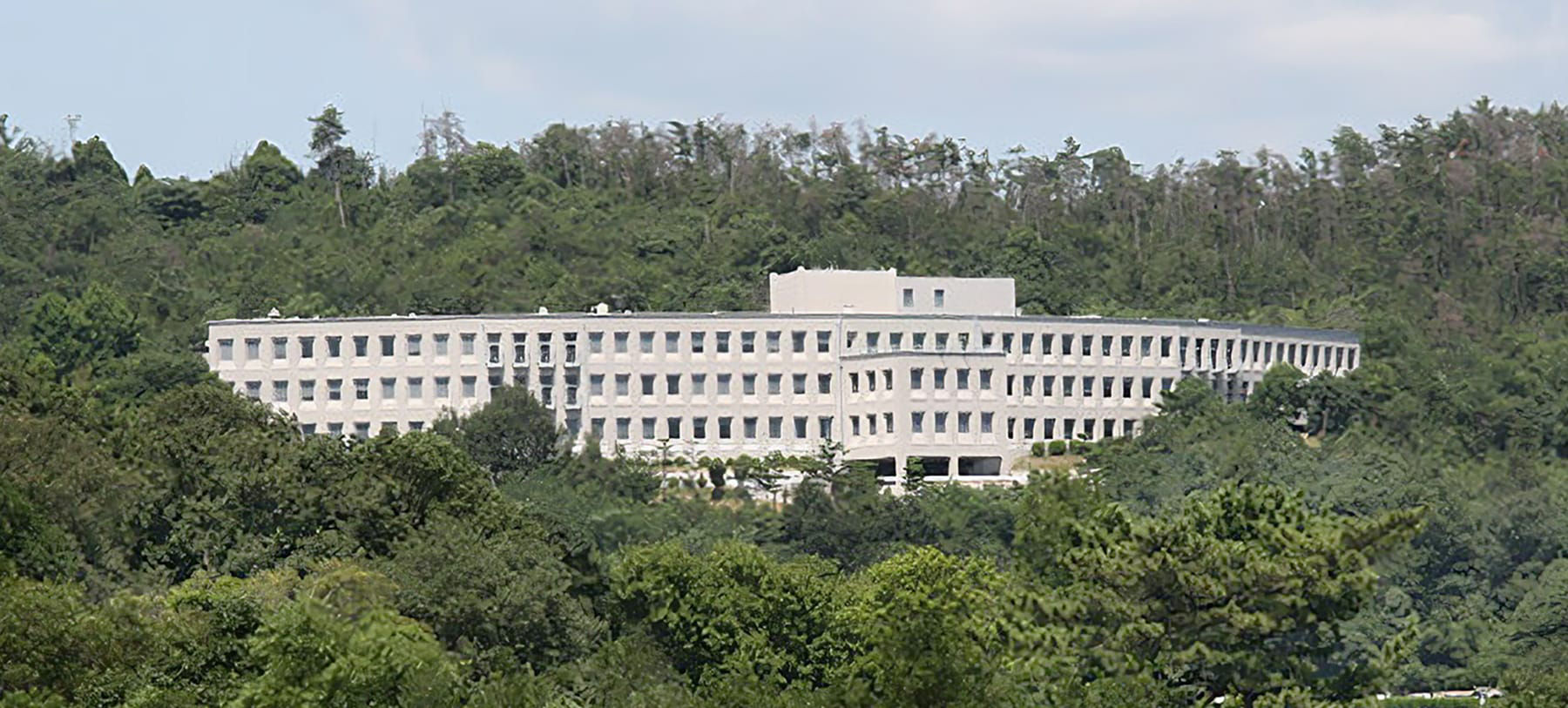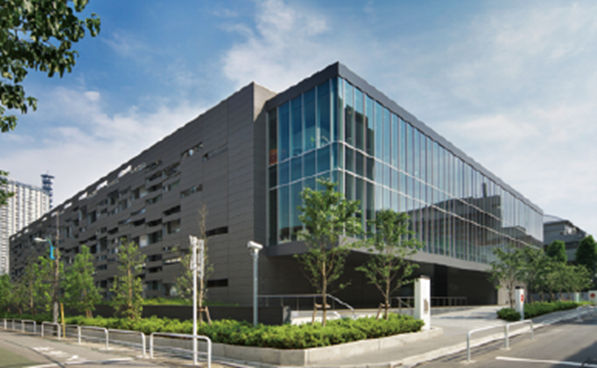Introduction to Research and Development
Research and Development Division
Central to realizing the Kuraray Group’s vision as a Specialty Chemical Company achieving sustained growth is the Research and Development Division, the main thrust of our corporate R&D and new business development activities.
Kurashiki Research Center
With a foundation in organic synthesis and polymer synthesis technologies, catalytic chemistry, polymer material related technologies and environment & energy technology, the Kurashiki Research Center focuses on R&D of new businesses, products and technologies. As the analysis hub of the Kuraray Group, it also conducts global efforts to solve technical issues using analytical and safety evaluation technologies.

1. History
The history of the Kurashiki Research Center began in July 1968, when it was established as the Kuraray Rayon Central Research Laboratory in the Aoe-yama district, now the site of the Kurashiki Plant (Research Division). At the time, many Japanese manufacturers were beginning to establish central research laboratories as part of a broader national trend.
Over the years, the organization underwent various changes, including restructuring, consolidation, and transfers, adapting its role to the needs of each era. In September 2012, it was reorganized into the Kurashiki Research Center, composed of four laboratories: Organic Synthesis, Polymer, Structure & Physical Properties, and Environment & Energy—a structure that continues to the present day.
2. Key Features
The Kurashiki Research Center base on organic synthesis technology, catalyst technology, polymer-related technology, biomass material-related technology, carbon material technology, and analytical technology. By incorporating new technologies, we engage in the research and development of advanced and innovative materials in growing market areas, and serve as the hub for analysis and evaluation within the Kuraray Group.
3. Research Activities
Synthesis Research Laboratory
This laboratory is advancing the development of new catalyst technologies and environmentally friendly materials by leveraging catalyst and organic synthesis technologies.
Polymer Research Laboratory
Focusing on materials and technologies related to vinyl acetate (VA), one of Kuraray’s core business, this laboratory aim to develop new polymer-related materials by advancing biomass material-related technologies, looking ahead to the future of our business.
Analytical Technology and Solutions Laboratory
Through analytical technologies, this laboratory provides solutions to technical issues that arise in the Kuraray Group’s production, sales and development departments.
Environment and Energy Research Laboratory
This laboratory conducts research and development related to environment and energy to create new businesses in the environmental and energy fields, which are growing markets.
Tsukuba Research Center
The Tsukuba Research Center applies its core technical strengths in polymerization and modification, molding, polymer processing and computational chemistry to develop new businesses, products and technologies.

1. History
Taking advantage of its location in relation to the Head Office, Niigata Plant and Kashima Plant, the Tsukuba Research Center is our R&D base in eastern Japan. Operations are vertically integrated from basic research on polymer materials and polymer processing to product development close to customers. It originated as the Kuraray Tsukuba Research Laboratories, which was established in April 1994 on the site of World Expo 1985. In 2009, it was renamed the Tsukuba Research Center and established two laboratories (Polymer Materials and Polymer Processing) under the Research and Development Division that create and nurture the seeds of future businesses. In addition, development staff from the Methacrylate Division, Genestar Division, Elastomer Division and other divisions have been assigned to the Tsukuba Research Center, where they are all conducting research under the same roof.
2. Key Features
Taking advantage of its location in relation to the Head Office, Niigata Plant and Kashima Plant, the Tsukuba Research Center is our R&D base in eastern Japan. Operations are vertically integrated from basic research on polymer materials and polymer processing to product development close to customers. It originated as the Kuraray Tsukuba Research Laboratories, which was established in April 1994 on the site of World Expo 1985. In 2009, it was renamed the Tsukuba Research Center and established two laboratories (Polymer Materials and Polymer Processing) under the Research and Development Division that create and nurture the seeds of future businesses. In addition, development staff from the Methacrylate Division, Genestar Division, Elastomer Division and other divisions have been assigned to the Tsukuba Research Center, where they are all conducting research under the same roof.
3. Research Activities
Polymer Materials Research Laboratory
This laboratory is engaged in the polymer design and technology development of specialty polymers based on polymerization and modification technologies, as well as the development of their applications.
Polymer Processing Research Laboratory
This laboratory studies ways to enhance the value of products through the creation of functional films centering on double layering, as well as processing technologies. It also considers and practices analysis and simulations with a focus that is not just within the laboratory, but also supports development across the Kuraray Group.
Others
Business divisions take advantage of this location to conduct activities such as new grade development and customer service, according to their respective situations.
Tokyo Lab
This laboratory is a satellite lab within the Tokyo Women’s Medical University-Waseda University Joint Institution for Advanced Biomedical Sciences (known as TWIns), to support open innovation in the life sciences field. It focuses on enhancing customer solutions and strengthening industry-academia collaboration in this field.

R&D Units under the Direct Control of Business Divisions
These units work to expand business by boosting efficiency in R&D and technical service related to the products of each division. They also make product improvements according to customer requests, and further evolve the technologies that are fundamental to each division’s business continuity.
Main Functions
| Market Expansion |
|
|---|---|
| Improvement of Product Competitiveness |
|
| Advantageous Management of Intellectual Property |
|
Talent Development & Career Programs
At Kuraray, we focus on developing employees' abilities through their work responsibilities, complemented by feedback and coaching from supervisors and colleagues, participation in both internal and external training programs, and self-directed learning using company-provided development tools. Many stakeholders are involved in supporting our strong commitment to human resource development.
In addition to on-the-job training (OJT) and structured programs designed to build the knowledge, abilities, and skills required for each role, we have recently enhanced systems that support each employee’s autonomous learning and development.
For more details on Kuraray’s human resource development and training system, please refer to the link below.
